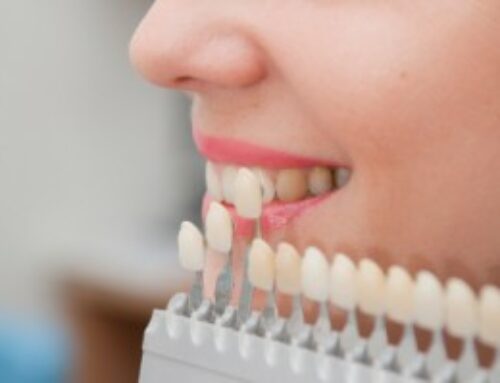Decay, accidents, and sports related injuries are just a few of the common causes of tooth loss. However, thanks to modern dentistry, none of us has to endure the embarrassment and other difficulties associated with having the gaps created by missing teeth.
Implants or Dentures
Full or partial dentures are one of the oldest solutions for filling the spaces left by missing teeth. This solution is not, however, without drawbacks. If not perfectly fitted and properly secured, dentures can slide or fall out. Which can be, to say the least, a bit disconcerting. Improperly placed dentures can also lead to pain and soreness in the gums and jaw. Probably the greatest problems with dentures is that, unlike real teeth, they don’t stimulate the bones of the jaw. This can lead to gradual bone loss.
On the other hand, implants, unlike dentures, are surgically placed in the jawbone, resting beneath the gums. Tiny metal posts serve as new “roots” for the implanted replacement teeth. These new teeth look, feel, and act, like the real thing. Implants prevent bone loss and stay in place without any trouble or worry. You can talk normally and enjoy all your favorite foods without worrying about movement or discoloration. And you can brush them like your normal teeth.
Dentures may be cheaper than implants but that is their only advantage.
Two Types of Dental Implants
 The two types of dental implants are called endosteal and subperiosteal. Depending on the health of the patient’s gums, the oral surgeon will select the best one of these to suit the situation. Patients with healthy jawbones will likely receive endosteal implants. These implants consist of titanium posts surgically placed into the jaw. Once the post area is fully healed, a crown is secured onto the post, creating a perfectly natural looking and feeling tooth.
The two types of dental implants are called endosteal and subperiosteal. Depending on the health of the patient’s gums, the oral surgeon will select the best one of these to suit the situation. Patients with healthy jawbones will likely receive endosteal implants. These implants consist of titanium posts surgically placed into the jaw. Once the post area is fully healed, a crown is secured onto the post, creating a perfectly natural looking and feeling tooth.
Patients without enough jawbone to support endosteal tooth replacement may receive subperiosteal implants. These consist of metal frames placed between the jawbone and gum tissue. The titanium posts are added to this framework, protruding up from the gumline. Crowns can then be attached to these posts.
Which Come First; Braces or Implants?
When a patient needs both orthodontic treatment and dental implants, braces comes first. Implants won’t move, once they have been placed in the jaw. However, in some cases an implant can be placed before orthodontic treatment to act as an anchor to help move the natural teeth into their proper position in the mouth.
We’ll be Happy to Talk to You About Implants
If you have a missing tooth and would like to fill the gap, please give us a call. Over three million U.S. residents have at least one dental implant. It’s a tried and true dental procedure and has completed many smiles. Give us a call and we can evaluate the health of your jawbone and tell you which type of implant will be best for you.










